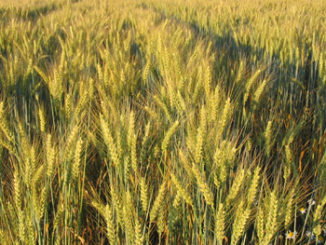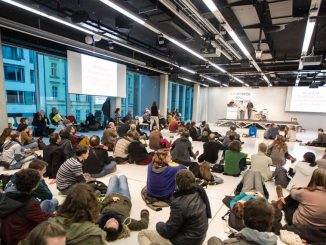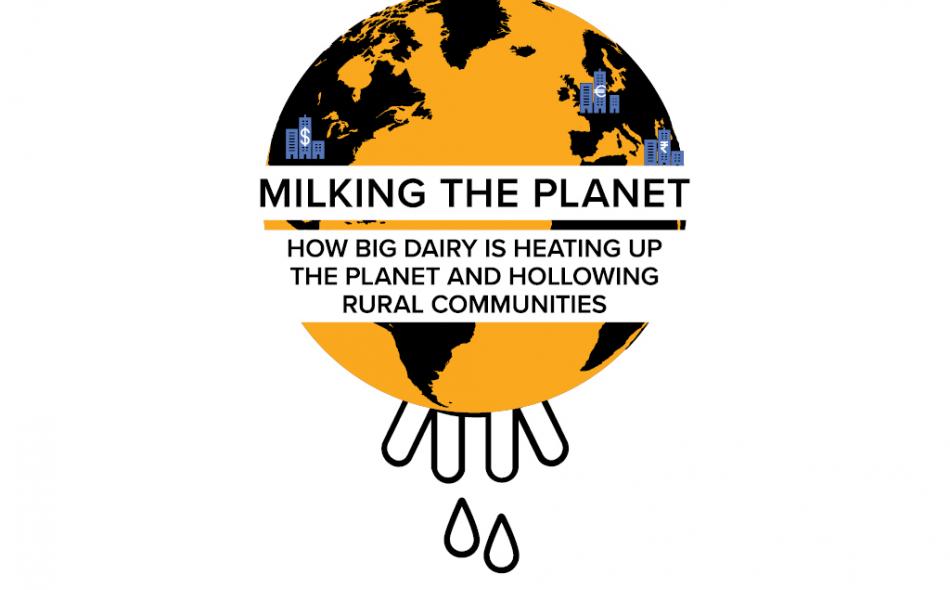
Big Dairy’s greenhouse gas emissions are increasing, but the corporations responsible are not being held to account. Meanwhile consolidation in the dairy industry is squeezing smaller operators and hurting rural communities. It’s time to hold agribusiness accountable for its climate footprint, argues Shefali Sharma in a new report from the Institute for Agriculture & Trade Policy.
Thirteen of the world’s largest dairy corporations combined to emit more greenhouse gases (GHGs) in 2017 than major polluters BHP, the Australia-based mining, oil and gas giant or ConocoPhillips, the United States-based oil company. Unlike growing public scrutiny on fossil fuel companies, little public pressure exists to hold global meat and dairy corporations accountable for their emissions, even as scientific evidence mounts that our food system is responsible for up to 37% of all global emissions.
The total combined emissions of the largest dairy corporations rose by 11% in just two years (2015-2017) since we last reported on them. Even as governments signed the Paris Agreement in 2015 to significantly rein in global emissions, these companies’ increase of 32.3 million tonnes (MtCO2eq) of GHGs equates to the pollution stemming from 6.9 million passenger cars driven in one year (13.6 billion litres or 3.6 billion gallons of gasoline). Some dairy companies increased their emissions by as much as 30% in the two-year period.
The emissions rise occurred amidst a dramatic crash in global dairy prices in 2015-2016. This crash was fueled partially by increased production from mega-dairies and global dairy corporations that dumped excess dairy into the global market, pushing prices down below the cost of production and forcing out many small to mid-sized dairy farmers. COVID-19 has dramatically compounded the dairy crisis rural communities face.
Since our first global assessment in 2018 with GRAIN, Emissions Impossible: How big meat and dairy are heating up the planet, the global dairy industry has continued to expand and scale up into new territories through mergers and acquisitions, expanding its collective production by 8% in just two years.
None of these companies are required by law to publish or verify their climate emissions or present plans to help limit global warming to 1.5˚C. Fewer than half of these companies are publishing their emissions. Zero out of the 13 have committed to a clear and absolute reduction of emissions from their dairy supply chains or emissions from the animals themselves.
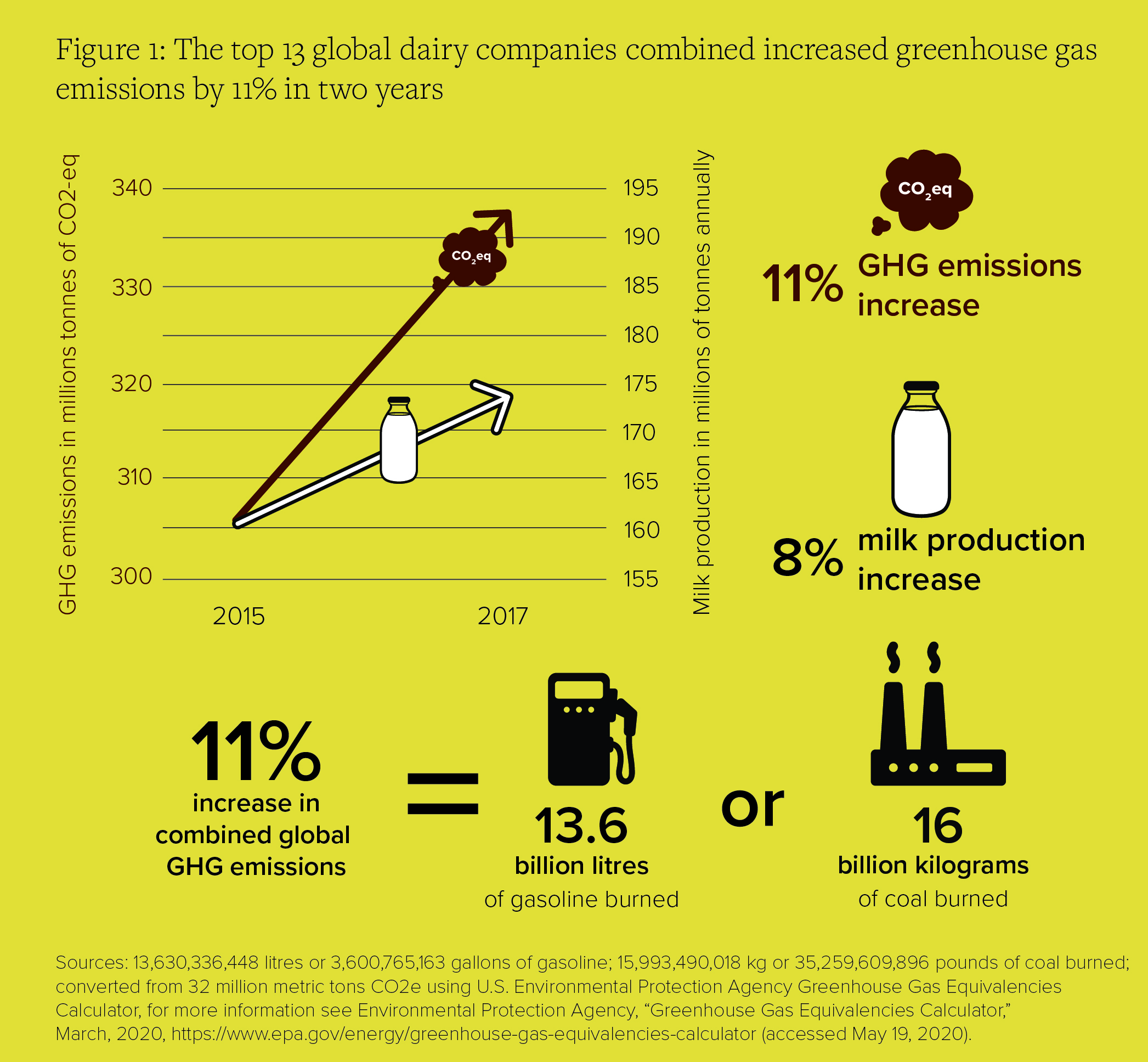
Emissions Intensity
Reducing emissions per litre of milk hides environmental costs of overproduction
Emissions from dairy animals in the supply chain account for over 90% of corporate dairy emissions. Yet, only three companies out of the 13 have pledged to address scope 3 (dairy supply chain) emissions to any degree. Companies such as Danone and Arla track their supply chain emissions through “emissions intensity” reduction targets. However, what ultimately counts for a warming climate is whether these companies are reducing their overall emissions at a scale that matters, not their emissions reductions per litre. For example, a FAO study reveals that while the industry reduced emission intensity by 11% between 2005-2015, its overall emissions increased by 18% in that same period.
The European Union (EU), United States (U.S.) and New Zealand alone account for nearly half (46%) of all global dairy production. The companies headquartered in these and other industrialised countries account for the lion’s share of global dairy emissions, and these governments are the best placed to enact policies that enable a Just Transition for dairy producers towards much more climate resilient and agroecological practices in line with ambitious 2030 and 2050 emissions reduction targets.
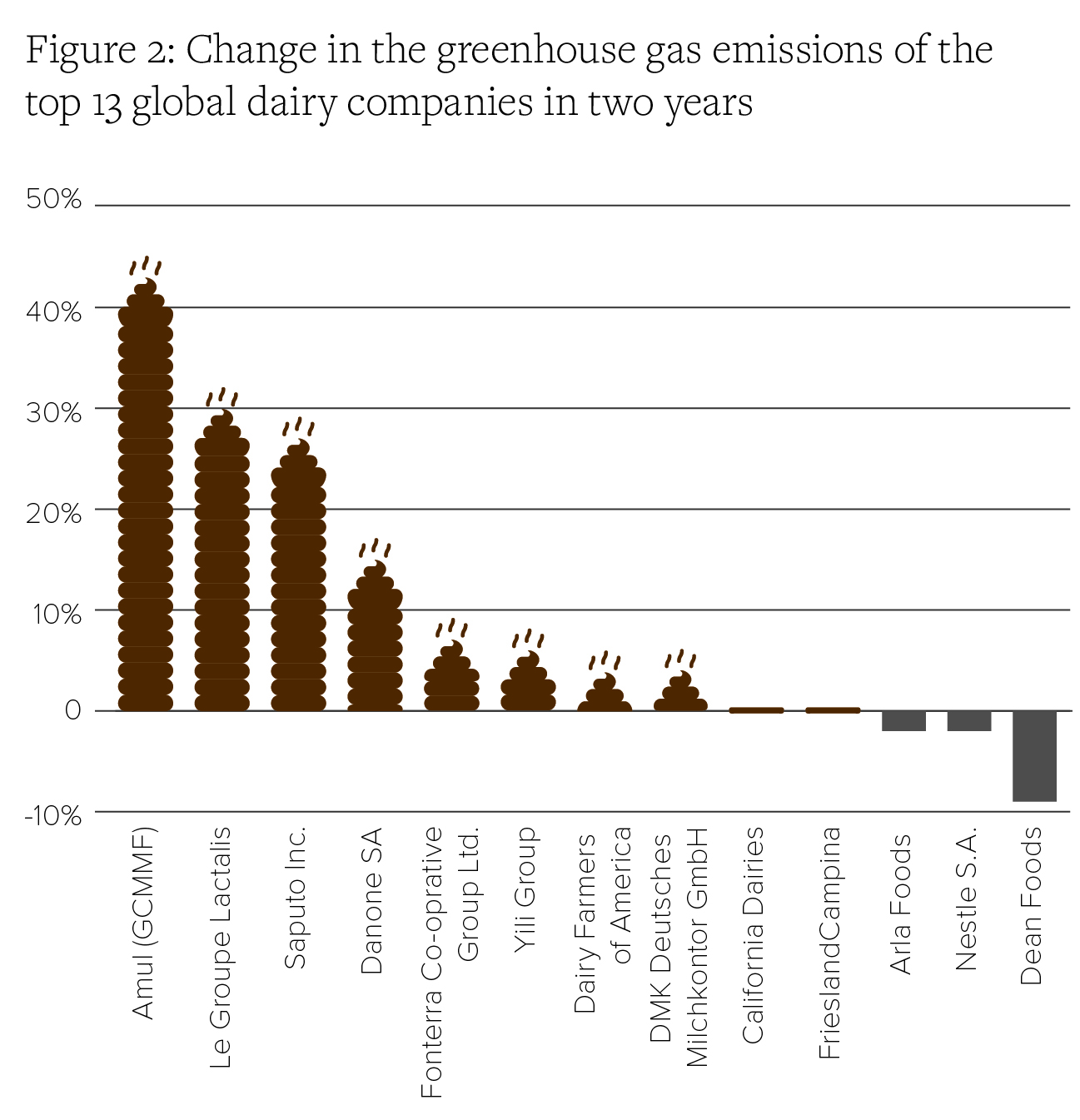
Dismantling supply management, hastening rural and climate crises
Governments must begin to address both the rural and climate crises associated with the dairy sector by listening to rural communities about their economic and social needs. Fewer and much larger mega-dairies are flooding the market, pushing out small to mid-sized dairies and hurting rural economies. There is growing support for supply management, a crucial policy that could address dairy’s twin crises. Supply management schemes prevent overproduction, balance supply and demand and stabilise prices.
In their absence, global dairy prices have become volatile with boom and bust cycles. From 2008-2018, the global dairy price crashed twice. Competition policies (or lack thereof) in favour of large corporations have further increased corporate buyer power by driving mergers and acquisitions, pushing down prices even more. Dairy prices for the last decade and more have been below the actual cost of production.
The COVID-19 crisis is amplifying calls for supply management
As countries shut down and corporations stopped buying milk, farmers have been forced to dump milk on the streets. The European Milk Board, representing over 100,000 producers, is calling on governments to implement a Market Responsibility Program that triggers supply controls in various stages when the milk price begins to fall below a certain index. U.S. family farm groups are pointing to their Canadian neighbors to advocate for the return of supply management.
Global Dairy Crisis
As market concentration and production has increased in every major dairy production region, indebtedness, farm loss and bankruptcies in rural communities have also increased:
EU: Four out of five dairy farms disappeared between 1981-2013. EU’s milk quota removal in 2015, along with other factors, contributed to the second global dairy crisis in 10 years. The EU accounts for over a quarter of the world’s exports. Its dairy corporations remain competitive in the global market by paying EU farmers below the cost of production and dumping “cheap” dairy exports into developing country markets. If the EU is serious about its climate ambition, not only must the EU dramatically reform the Common Agriculture Policy (CAP) to incentivise environmental resilience, but also regulate the market so that companies pay producers their cost of production plus a reasonable profit.
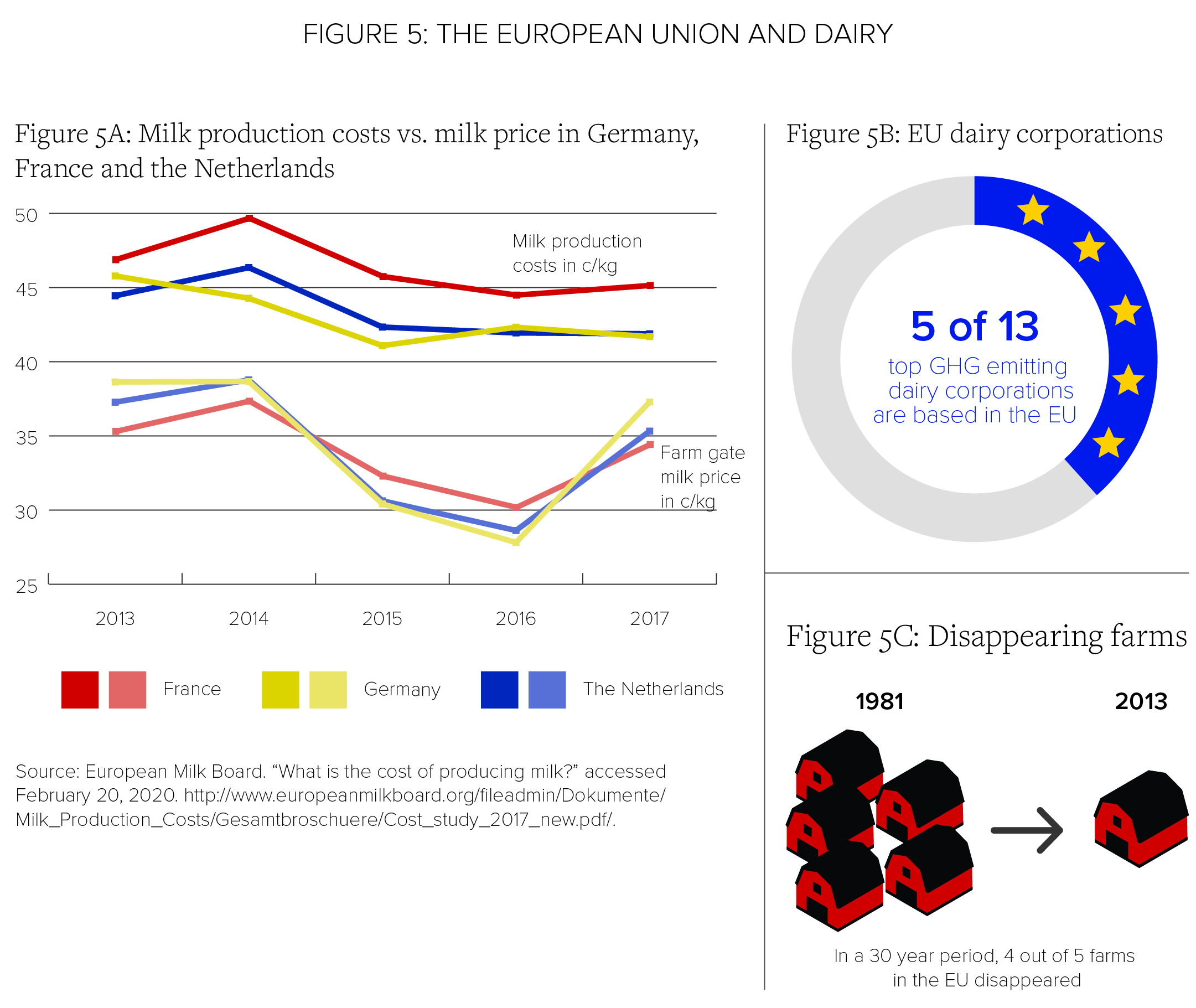
Way Forward
Redirect, Regulate, Regenerate
There is an exit out of this dead end: by redirecting public funds away from industrial agriculture, regulating the public health, environmental and social impacts of this extractive model of production and designing incentives to regenerate rural communities through agroecology.
In the EU, the CAP negotiations present perhaps the last opportunity to overhaul the perverse system of public subsidies that benefit large operations and perpetuate a destructive model of agriculture. The next reform, along with a genuine European Green Deal, must help catalyse a shift towards agroecological systems that support rural communities, while preventing harm to small producers in the Global South.
Governments need to begin by integrating climate goals within their national-level farm policies. These climate goals should address strategies to build climate resilience and reduce emissions. Critically, trade rules must be reformed, having thus far driven an export-focused agriculture system while ignoring the climate. International development aid also needs to support an integrated set of social and environmental measures for agroecological systems that support small-scale producers in the Global South.
For a real climate revolution in the agriculture sector, governments have to transform farm and climate policy in a way that shifts power away from these corporate drivers. They must be courageous enough to enact policy change towards agroecological systems that empower rural producers to do the right thing for their families, communities and the planet.
This is an excerpt from the report “Milking The Planet: How Big Dairy Is Heating Up The Planet And Hollowing Rural Communities” by Shefali Sharma of the Institute for Agriculture & Trade Policy.
Read the full report here
More on Dairy
#MilkCrisis | EMB – Market Responsibility Programme To Solve The Milk Crisis
#MilkCrisis | Alan Matthews on Voluntary Milk Supply Reduction Scheme




